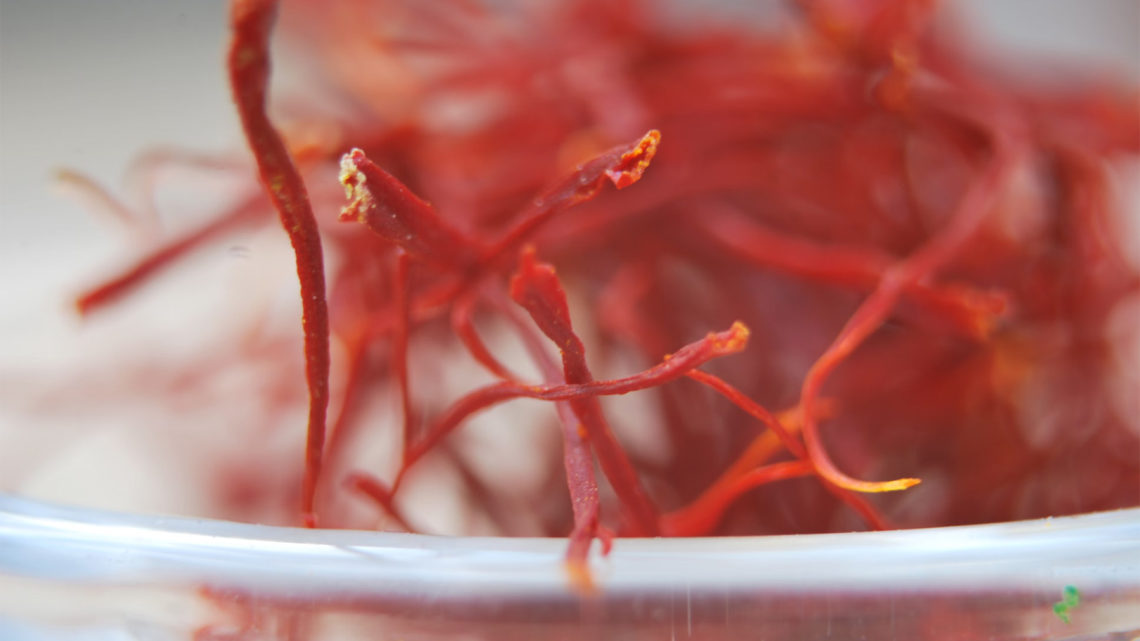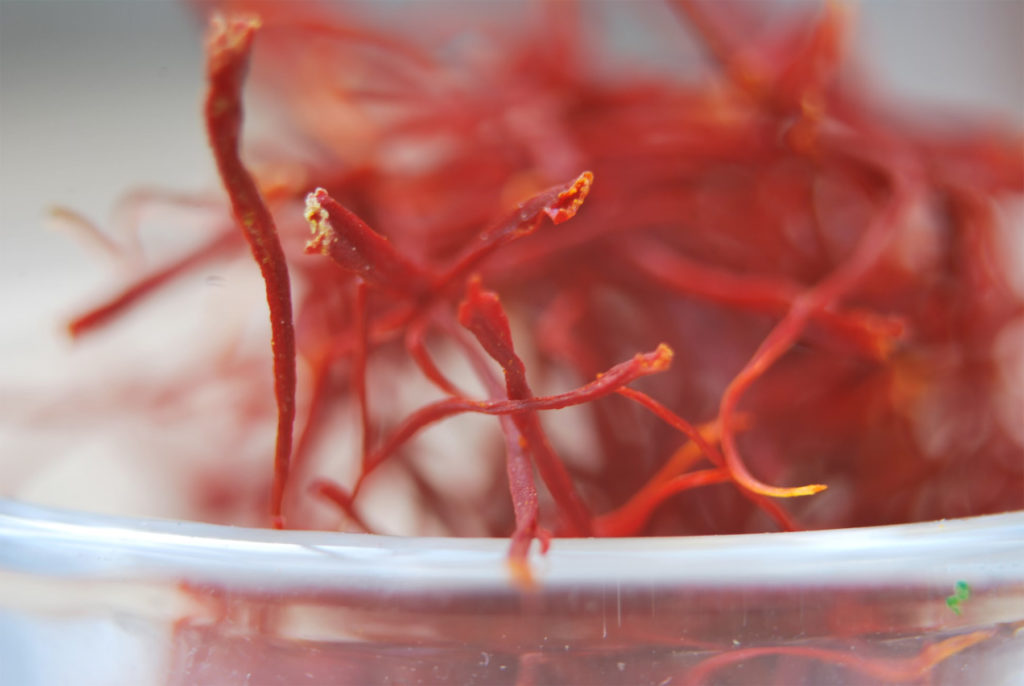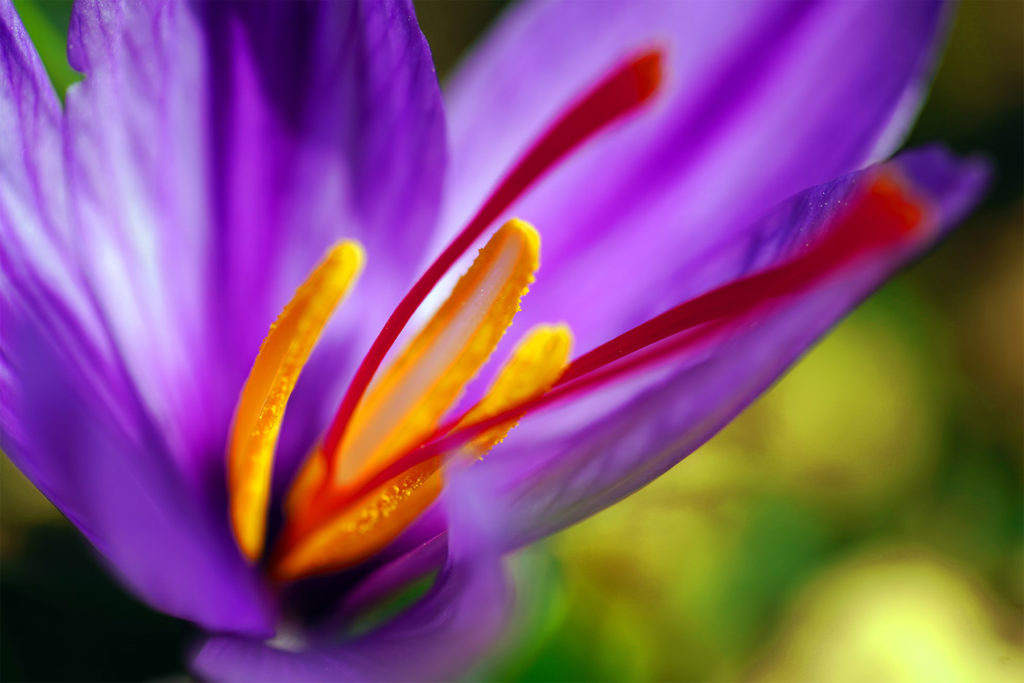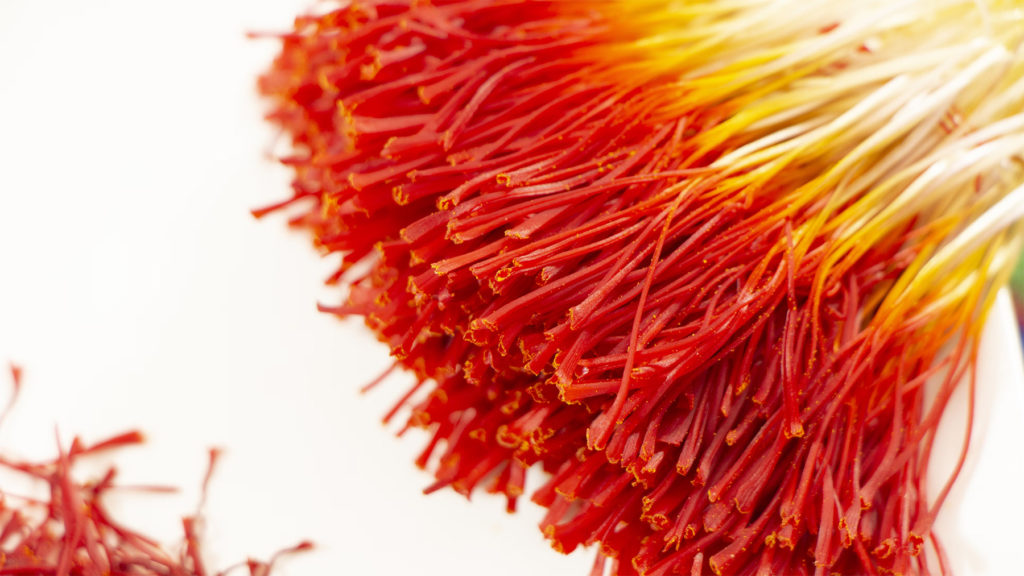
Saffron: a precious spice in the kitchen
Discover saffron, its origins, its culinary evolution, its preparation techniques, its flavour profile and the best places to taste it.
Saffron, often called “red gold”, is a precious spice known for its distinctive flavour and vibrant colour. Originating in the Middle East, it is now used in many cuisines around the world. This article explores the origin, history and evolution of the use of saffron, as well as preparation techniques and culinary combinations to make the most of it.

Origin and history of saffron
Saffron comes from the pistil of the crocus flower (Crocus sativus). This spice has a rich history, dating back more than 3,000 years. The first traces of saffron use were found in Iran, although its use soon spread to Greece, Egypt and Rome. Saffron was prized for its medicinal properties, its ability to dye textiles and, of course, its culinary use.
The most famous saffron-producing regions include Iran, Spain, India and Morocco. Each region has developed specific cultivation and harvesting techniques, influencing the quality and characteristics of the spice.
Cultural importance and culinary evolution
Saffron is of great cultural importance, particularly in Mediterranean and Asian cuisine. It is a key ingredient in traditional dishes such as Spanish paella, risotto alla milanese in Italy, and biryani in India. These iconic dishes demonstrate how saffron has evolved from a simple colouring agent to a prized culinary spice.
In Spain, paella is a symbol of conviviality, often prepared for family and community celebrations. Risotto alla milanese, with its saffron, is a refined dish in Italian cuisine, showing the influence of medieval trade with the Middle East.

Ingredients and preparation techniques
Saffron consists of three red stigmas per crocus flower, hand-picked and dried. It takes around 150,000 flowers to produce one kilogram of saffron, which explains its high cost, ranging from €30 to €40 per gram.
To prepare saffron, we recommend soaking it in hot water or stock for at least 30 minutes before adding it to dishes. This technique allows the spice’s aromatic and colouring compounds to be fully extracted.
Traditional techniques
In biryani, for example, saffron is infused in hot milk before being mixed with rice and other ingredients, adding a rich flavour and a distinctive golden colour. For paella, saffron is dissolved in the broth, giving the rice a distinctive yellow hue.
Taste profile and food pairings
Saffron has a subtle, slightly bitter flavour, with notes of honey and an earthy sweetness. When properly prepared, its texture dissolves perfectly in dishes, leaving no grainy residue.
Drink suggestions
Saffron dishes go well with light, dry white wines such as Sauvignon Blanc or Pinot Grigio. Saffron-infused teas, popular in Iran, can also accompany meals, providing a complete culinary experience.
Popular stories and legends
Legend has it that Alexander the Great used saffron in his baths to heal his wounds after battles. The Romans, meanwhile, used it to perfume their halls and theatres, believing in its aphrodisiac and medicinal properties.

Regional and seasonal varieties
Spanish saffron, particularly from the La Mancha region, is renowned for its high quality and intense aroma. Saffron from Kashmiri, India, is also highly prized for its deep colour and aromatic properties. Each producing region has its own cultivation techniques, influencing the spice’s flavour profile.
Personal experience and recommendations
Enjoying a saffron dish in a traditional restaurant is a unique experience. In Spain, the Casa Benigna restaurant in Madrid is famous for its paella. In Milan, “Il Marchesino” offers an exceptional risotto alla milanese.
For those who prefer to cook at home, it is essential to source quality saffron. Specialist websites and local markets are good sources for buying this precious spice.
Saffron, with its rich history and culture, continues to captivate chefs and gourmets the world over. Whether in a traditional dish or a modern recipe, saffron adds a unique and refined touch. For those wishing to explore this spice at home, starting with simple recipes and using quality ingredients is the key to discovering saffron’s full potential.